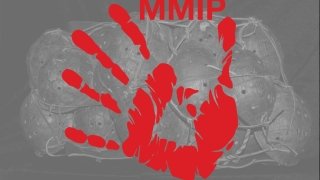
Exhibition: One Earring- Missing & Murdered Indigenous People Awareness
St. Lawrence University’s Native American Affairs and the Richard F. Brush Art Gallery present One Earring, an exhibition designed to raise awareness about Missing and Murdered Indigenous People (MMIP). Representing those who were stolen or never returned home, the One Earring project was inspired by the U.S. Bureau of Indian Affairs Office of Justice Services exhibition of the same title in 2022.
How to Help
You and community members from across the North Country and beyond are invited to participate by sending one or more single earrings to Brenda Papineau, Director of Native American Affairs, St. Lawrence University, 11 Hillside, Canton, NY 13617. For campus donations, a designated box will be available at the Student Information Desk in the Sullivan Student Center.
Any earring(s) submitted will be considered a donation to be used in the exhibition and on social media. Earrings will be collected between Thursday, April 18, through Sunday, April 28, 2024, and will be displayed during a special presentation by the Seven Dancers Coalition from Akwesasne on Tuesday, April 30, 2024, at 12:00 noon in the Winston Room at the Sullivan Student Center. The exhibition will be on display through June 2, 2024.
According to the U.S. Administration for Children & Families, American Indian and Alaska Native women face the highest rates of domestic violence and sexual violence in the country. In response, communities have designated the month of May to raise awareness of the “thousands of Indigenous women, girls, Two-Spirit individuals, and people who have gone missing or have been murdered in the United States.”[1] People participate in marches, protests, fundraisers, and other activities, and many wear red in recognition of the day.
In 2023, President Joe Biden proclaimed May 5 as National Missing & Murdered Indigenous Persons Awareness Day, stating, “Indian Country has been gripped by an epidemic of missing or murdered Indigenous people, whose cases far too often go unsolved. Families have been left investigating disappearances on their own, demanding justice for their loved ones, and grieving pieces of their souls. Generations of activists and organizers have pushed for accountability, safety, and change. We need to respond with urgency and the resources needed to stop the violence and reverse the legacy of inequity and neglect that often drives it.”[2]
For more information about MMIP, visit the U.S. Administration for Native Americans’ Missing and Murdered Indigenous People and Native Hope’s Missing and Murdered Indigenous Women (MMIW). See also “Is There Hope for the Missing and Murdered Indigenous Women?” in The New Yorker, February 1, 2024.
Image courtesy of the Missing and Murdered Unit with the U.S. Bureau of Indian Affairs Office of Justice Services (https://www.bia.gov/service/mmu).
Questions?
Contact Brenda L. Papineau, Native American Affairs, bpapineau@stlawu.edu and/or Catherine Tedford, Richard F. Brush Art Gallery, ctedford@stlawu.edu.
